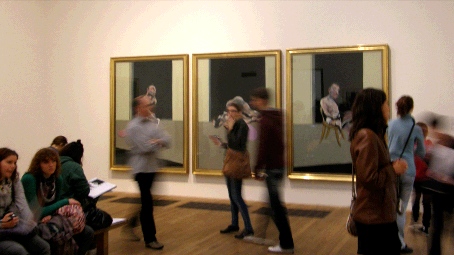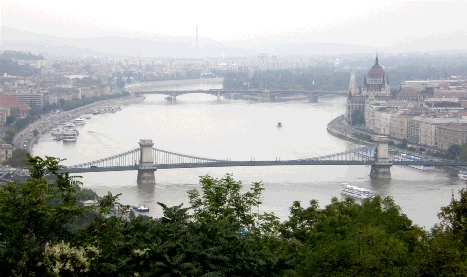In October 2010 we travelled to three countries in the Middle East: Egypt; Syria and Jordan. While in Egypt we took a Nile cruise, effectively an organised tour package complete with guide, but otherwise we travelled independently: by cab; rental car (in Jordan); bus; train and plane.
On the way there we had stopovers in London and Budapest to visit friends.
The impact on me was to reassert the depth, complexity and colour of this seminal part of our history and civilisation. In particular this is the cauldron in which Judaism, Christianity and Islam were created, together with much of our science, language and mathematics.
The history of technological development is also recorded from the Stone Age (upper Palaeolithic and early Neolithic), through weaving and pottery making to smelting copper, tin, gold, silver and bronze then to iron. We see the invention of the light spoked wheel, leading to the development of chariots in warfare; advances medicine; sailing; and civil engineering; each technology advance supporting or symbiotic with changes in social structures and agricultural and manufacturing methods.
In this respect the museums were very useful to essential, in interpreting the numerous ruins, remains and layers of successive cultures. I was very grateful for first having visited the British Museum and the Hungarian National Museum in Budapest, both sophisticated modern institutions, well laid out and documented, before arriving in Egypt and then for a day in the more chaotic but vast Egyptian Museum in Cairo, before setting out to try to put everything we saw into context.

Egyptian Museum Cairo
There were also unexpected gems along the way like the museum on the Citadel in Amman, Jordan (once Rabbath Ammon then Philadelphia, named after Ptolemy Philadelphus during Greek rule) that, with archaeological contributions from Sydney University, contains ceramic statues over 8,000 years old as well as earlier Neolithic tools and a good sample of early bronze age and iron objects, all the way through Greek and Roman periods (a lot of glass). Most of these were found locally in the midst of the Roman, Christian and Islamic ruins. The Museum even contains sections of the Dead Sea Scrolls. Other museums were disappointing like the one in Damascus, with some interesting objects but largely closed for renovation.
Together the remains of past human activity build a picture of mankind’s progress from early Homo erectus and Neanderthal hunter gatherers in Hungary; the arrival of modern Humans; early settlements around ten thousand years ago; the evolution of agriculture; the development of increasingly sophisticated technology and weapons; the rise of kings, warriors and priests, resulting in increasingly grand palaces; fortifications; temples; and mausoleums.
The remains of grandest of these early human political and power structures are in Egypt, attesting to the enormous wealth of the Nile region before the micro climate changed, reducing these lands and the communities they support to the, often abject, poverty we see today. Perhaps these climate changes were anthropogenic as a result of overpopulation, early agricultural practices and over-exploitation of the cedar and other forests but these were undoubtedly contributed to by natural climate change as the world emerged from the last ice age; a lesson for the present time?
Despite their builders' hubris and unrequited commitment to their gods, these huge constructions have long since fallen into ruin. But the ideas they embodied have not. As many scholars have noted, these early perceptions of man’s central role in the universe and his intimate interactions with his gods have flowed on, intermixed with those of Greece, Rome and northern Europe to produce the dominant religions of today, as well as the many flavours of those beliefs and intellectual fabrications.
View an interesting academic discussion of these origins and interactions: Science, Magic and Religion
These religious ideas have supported subsequent grand construction projects all the way to the vast and beautiful cathedrals of Europe and for at least ten millennia endorsed the divine right of kings to rule and conquer. They also fostered and supported civilisations and cultures capable of subtle ideas, beautiful art, and one imagines, music. Today the Middle East contrasts dramatically with London and Budapest.
In Britain and Hungary cities are resplendent with the culture of the modern era: from classical to modern painting, music and theatre.
Watch Slideshow: London Tate Modern St Pauls

At The Tate Modern, London – a hive of activity and interest
Bookshops and music retailers dot the retail areas as do specialist interest retailers of all kinds. There are numerous world leading universities and a high proportion of the populous are graduates.
It is possible to imagine that the ancient civilisations of Egypt, at the forefront of contemporary life, also supported or tolerated a wide diversity of cultural activities and beliefs. But just as the region is now desertified and impoverished, so much of it is in stark cultural contrast to the streets of London or Budapest. While there is a grand new, very modern library in Alexandria, most of the city is in an advanced state of decay. Cairo is bursting at the seams with overpopulation.
The arts across the region appear to be rooted in the past, particularly in religion. This is not surprising as Egypt has seen better days. Clearly there was something of a boom in wealth during the last century with many opulent buildings constructed across Egypt. But now most of these are in decay or even collapsed. The population has grown the point of un-sustainability and many of the younger generation are unskilled. Egypt has the lowest literacy rate in the Middle East mainly due to the poverty a large part of the population and the lack of education for girls.
For such a large country there is little evidence of any significant contemporary art culture, although there is a popular music industry and in some areas internet and phone pornography. Our TV in Cairo had 61 religious channels including a lot of ‘born again’ stuff from America surprisingly interspersed 33 for phone or internet sex. Maybe this is a subtle population control measure to offset the ‘go forth and multiply’ message of the others. This formed the vast majority of the channels, sharing the spectrum with a handful of channels for movies and games shows and half a dozen for news, mainly from Europe. Several channels were blocked. Goodness knows what these had on them[2].
Syria has many of the features of a police state having been under Emergency Law since 1962. Pictures of the President, Bashar al-Assad, adorn almost every building, public and private. They are still getting over being attacked (they believe unprovoked) by Israel in 2003 (alleged terrorist training centre) and 2007 (nuclear reactor) and the earlier Israeli occupation of the Golan Heights. Border security is tight and men dressed like Mormons with suits concealing guns prowl the city. And bus staff wants to know a bit too much about one’s movements. Despite this, Damascus was generally the most pleasant and interesting city we visited. Amman is the most conventionally modern city, with the best hotel we had in the region, was but it lacks the charm of Damascus.
Jordan and Syria have compulsory education to middle school and high rates of school attendance. But throughout the region general education seems to be rudimentary at best: hardly anyone can read a map, including the car hire representative and the concierge in Amman, who although fluent in English, was unaware of the existence of the museum at the Citadel.
In Egypt cab drivers, particularly of black and white cabs, are generally illiterate and navigate, as in India, by known landmarks or the ‘drive, stop, and ask directions method’. Once you have your bearings you need a map and to be able to direct them yourself or simple journeys can take hours.
Our University trained Egyptian guide on the Nile tour could not even guess at the age of the limestone in which the tombs in the Valley of the Kings are carved. It seemed to be something he had never considered. I asked if they had started by exploiting natural limestone caves an idea he completely dismissed.
But a quick look at Wikipedia revealed: ‘The tombs are located in the alternating sandwich of dense limestone between other sedimentary rock (which form the cliffs in the valley and the nearby Deir el-Bahri) and soft layers of marl. The sedimentary rock was originally deposited between 35 & 56 million years ago… The builders took advantage of available geological features when constructing the tombs. Some tombs were quarried out of existing limestone clefts, others behind slopes of scree, or were at the edge of rock spurs created by ancient flood channels.‘

The tomb of Twosret and Setnakhte - from the web – no photography in the tombs
He also wanted to argue that the Rosetta stone is in the Louvre in Paris even though I insisted I had just seen it in the British Museum in London, and he claimed ancient Egyptian gold was more pure than modern gold at 35 carets. He was genuinely shocked on another occasion when it was mentioned by our fellow Australians on board the boat that many people in Australia are not religious, replying ‘but God made the world’. To which he got the obvious response ‘then who made God’. At that point his distress became obvious saying: ‘that is an illegal question’, so we quickly changed the subject.
The status of women in the culture of the Middle East is well known, but it appears to vary from place to place. Women are never numerous in public, among a relative sea of men and most have scarves and or veils. But in the cities head scarfs are not universal, even among locals. Elsewhere the only adult women exposing their hair are foreigners or Christians. Christians constitute a sizeable minority throughout the Middle East of around ten percent. There is a Christian ghetto in Damascus. Our Egyptian guide was interesting on the subject of veils. He is engaged to be married to another guide but expects her to be veiled, and presumably to give up her job, when they marry. He told us that until marriage a woman should obey her father’s wishes as to the veil but after marriage, her husband’s. If she is beautiful he will not want other men to be looking at her lustfully, but if she is plain this won’t be an issue.

